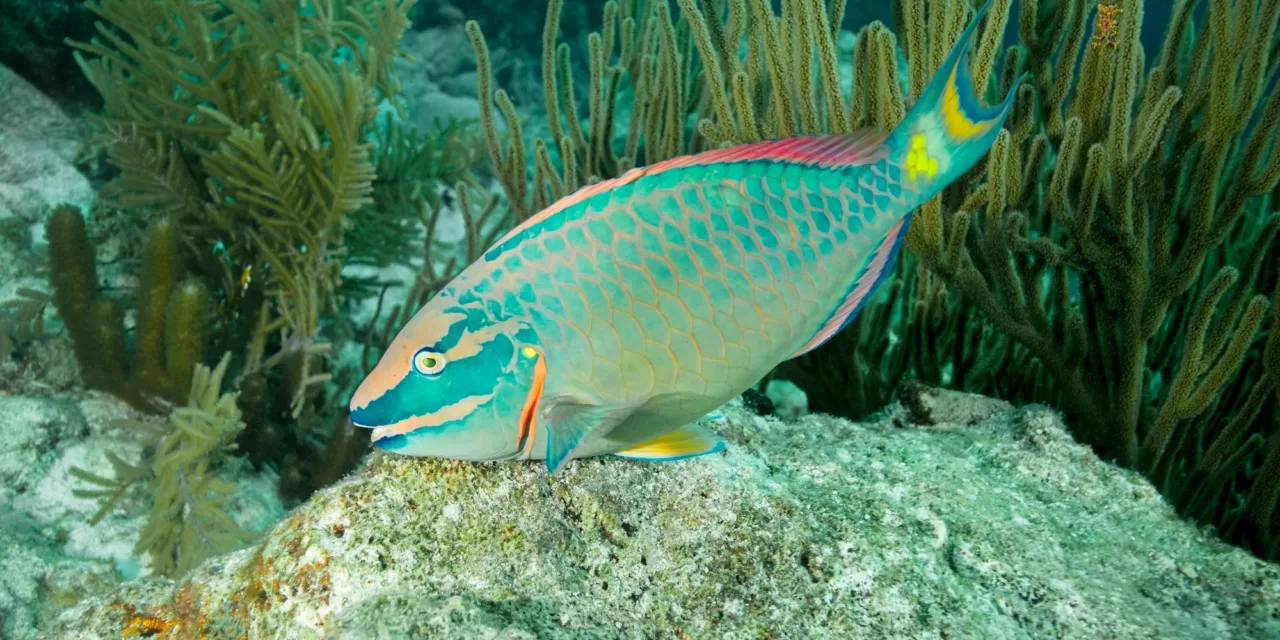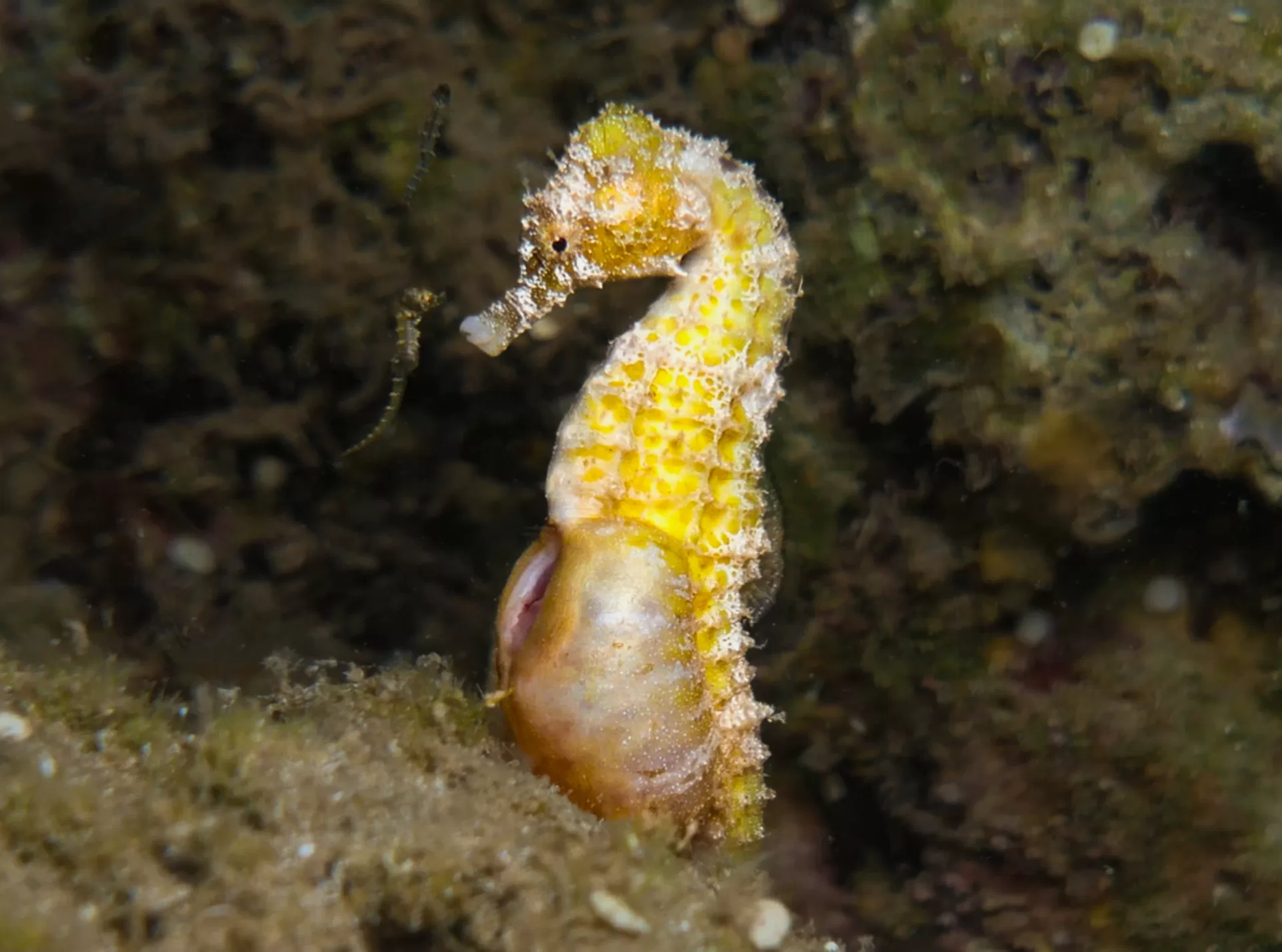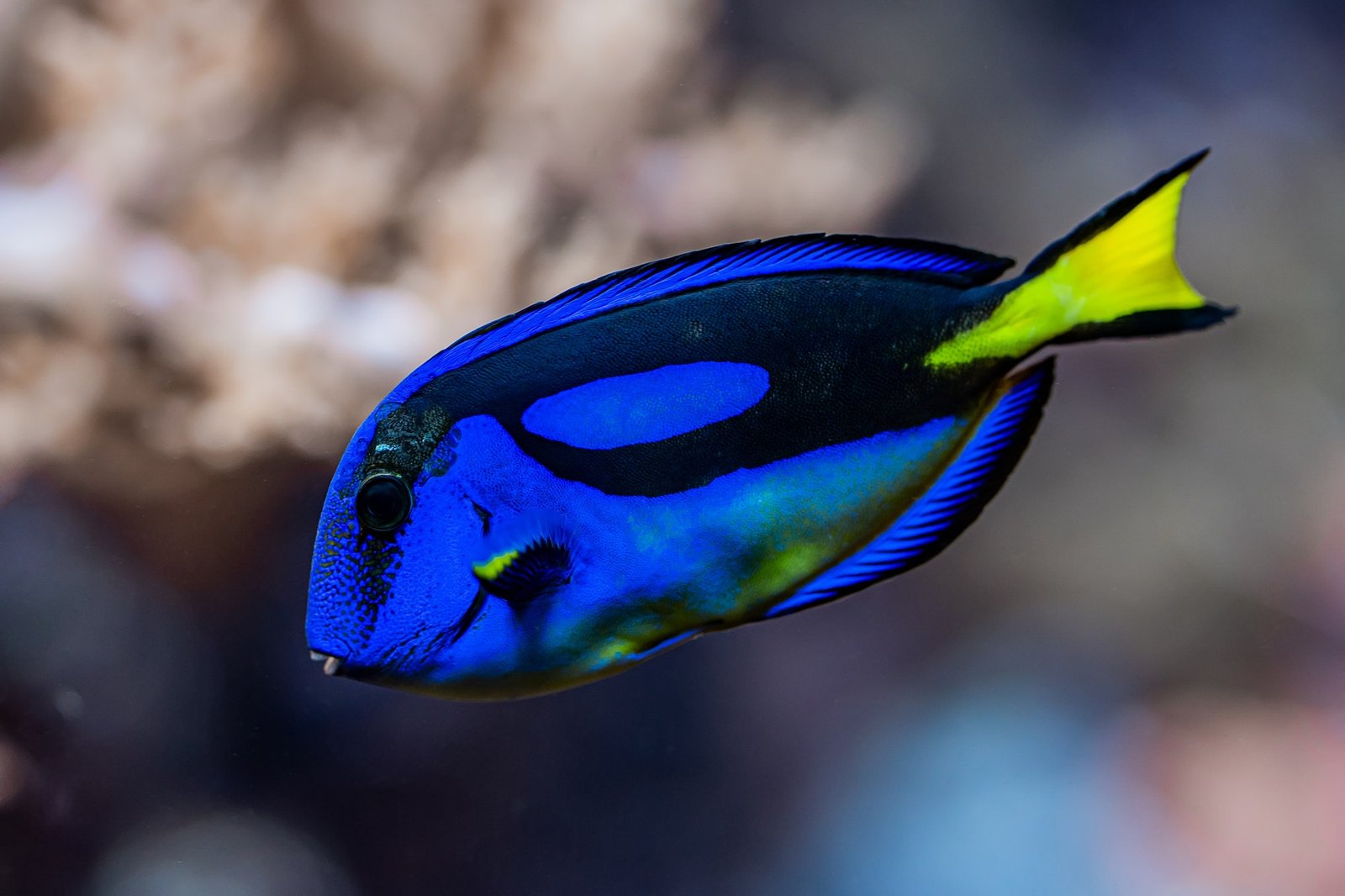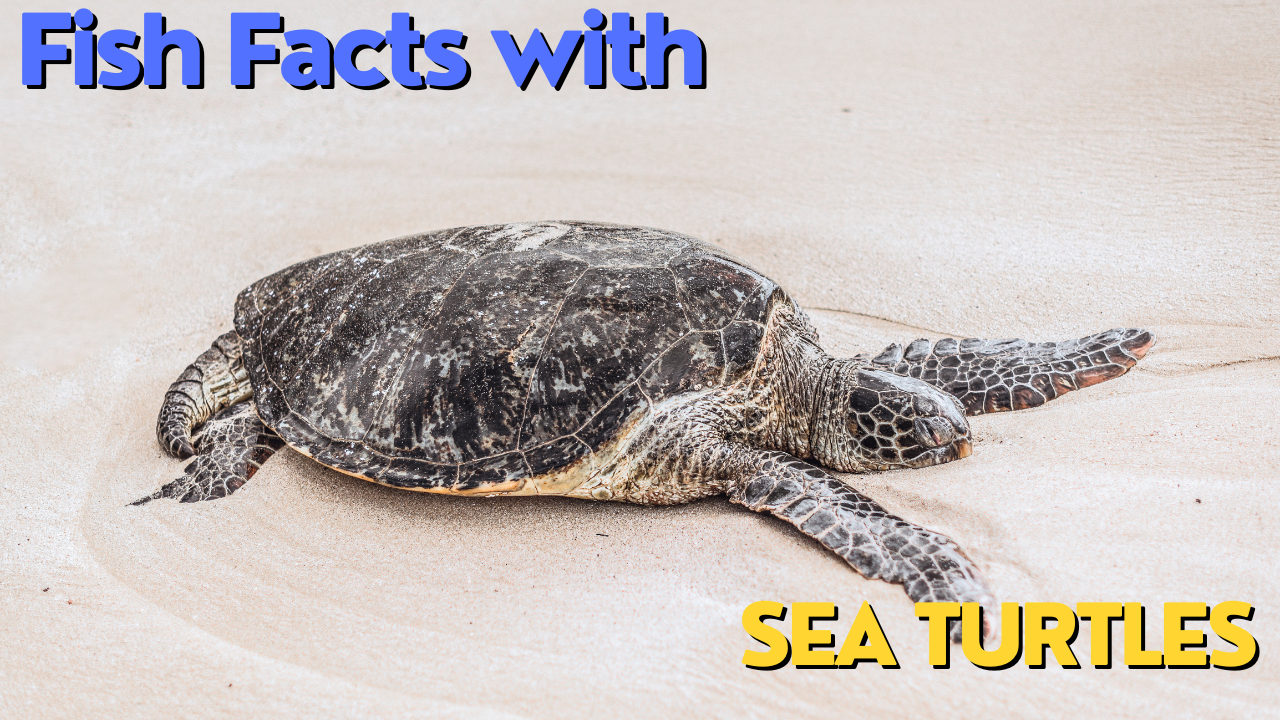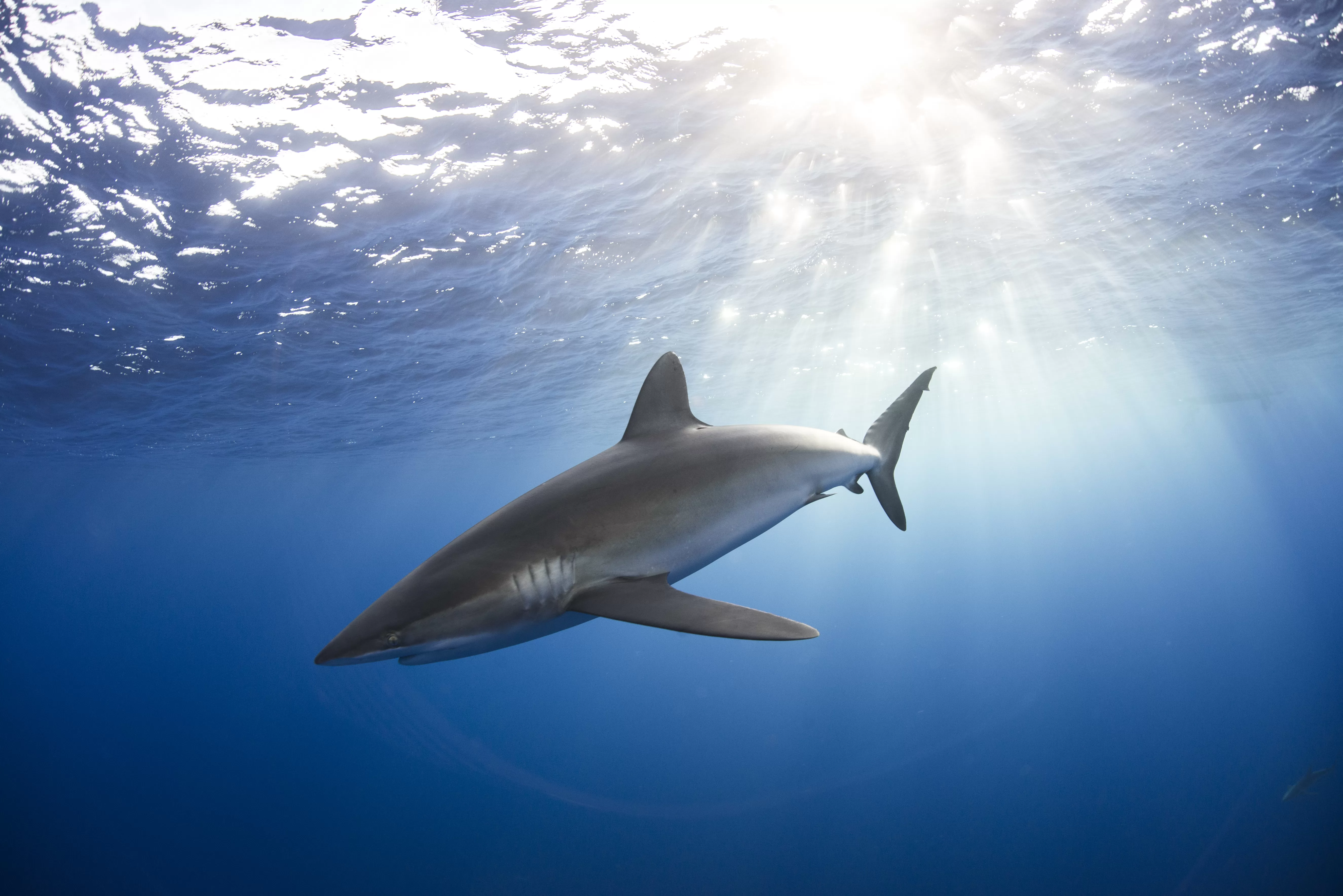The Scientific World of Parrotfish
Parrotfish, a vibrant and essential component of marine ecosystems, present a fascinating subject for both scientific study and scuba diving enthusiasts. This group of fish, belonging to the family Scaridae, showcases a remarkable array of colors and sizes, with over 80 recognized species populating tropical and subtropical oceans. Their taxonomy is a testament to biological diversity, with species ranging in size from the small, delicately-hued species to the large, boldly-colored ones.
The ecological significance of parrotfish cannot be overstated. They play a pivotal role in maintaining the health and balance of coral reef ecosystems. Their unique feeding habits, which involve scraping or biting off chunks of coral, contribute significantly to the process of bioerosion. This action is crucial for the natural process of sand production and helps in creating space for new coral growth, thus sustaining the reef’s life cycle. Additionally, parrotfish excrete sand, which is a significant contributor to the sandy beaches in tropical regions. Understanding the behavior and impact of these fascinating fish is key to appreciating the complex interdependencies within marine environments.
Bumphead Parrotfish: The Reef Bulldozer
The Bumphead Parrotfish (Bolbometopon muricatum) stands out among its peers due to its distinctive morphology and significant ecological role. This species, the largest of the parrotfish family, can be recognized by its prominent forehead bump and impressive size, reaching up to 1.3 meters in length. Their robust, beak-like mouths are adapted for a specialized feeding method: they consume live coral, playing a crucial role in shaping the structure of coral reefs.
The ecological impact of the Bumphead Parrotfish’s feeding habits is both profound and dual-natured. On one hand, their coral consumption activities contribute to the bioerosion of reefs, a process that, while natural, can be detrimental in excessive amounts. However, this same feeding behavior is crucial for reef regeneration. By breaking down hard corals, they facilitate the growth of other reef organisms and contribute to the diversity of coral reef habitats. Understanding the balance of their impact is essential for the conservation and management of coral reef ecosystems, highlighting the complex relationship between species and their habitats.
Blue Parrotfish: A Study in Marine Adaptation
The Blue Parrotfish (Scarus coeruleus) is a remarkable example of marine adaptation. This species is known for its striking blue coloration, which serves as an excellent camouflage in the vibrant coral reefs they inhabit. Blue Parrotfish have a unique physical adaptation: their fused teeth form a beak-like structure, ideal for scraping algae and small organisms off of rocks and coral. This beak, combined with their strong jaw muscles, allows them to feed effectively in their hard-surface habitats.
Behaviorally, Blue Parrotfish are known for their day-time activity. They are diurnal, spending their days actively foraging across the reef. At night, they exhibit an unusual behavior of secreting a mucous cocoon, which is believed to protect them from predators and parasites. Ecologically, their role is vital in controlling algal growth on reefs, ensuring that these ecosystems do not become overrun with algae and lose their biodiversity. This balance maintained by the Blue Parrotfish is essential for the health of coral reefs.
Rainbow Parrotfish: Colorful and Crucial for Coral Health
The Rainbow Parrotfish (Scarus guacamaia), the largest species of parrotfish found in the Atlantic Ocean, is notable for its striking coloration, which varies greatly and includes vivid blues, greens, reds, and yellows. This diversity in coloration is not just an aesthetic feature; it plays a role in their social interactions and mating behaviors. The taxonomy of the Rainbow Parrotfish places it in a group characterized by such vibrant displays.
In terms of their role in coral reef health, Rainbow Parrotfish are indispensable. They are one of the primary grazers on Caribbean reefs, feeding mainly on algae. This grazing is crucial as it prevents algal overgrowth, which can smother corals and impede their growth. The Rainbow Parrotfish’s feeding habits also contribute to the bioerosion process, creating fine sand and helping to shape the physical structure of the reef. Their presence and activities underscore the complex interplay between different reef species and the overall health of these ecosystems.
Stoplight Parrotfish: A Case Study in Hermaphroditism
The Stoplight Parrotfish (Sparisoma viride) provides a fascinating example of sequential hermaphroditism in the marine world. Initially born as females, many individuals undergo a transformation to males as they mature, a process influenced by social and environmental factors. This remarkable adaptation ensures genetic diversity and adaptability in their populations. Regarding habitat, Stoplight Parrotfish prefer shallow, reef-rich environments where they can effectively graze on algae. Their feeding habits significantly contribute to the health and diversity of coral reefs by controlling algal growth, a key factor in maintaining the delicate ecological balance within these ecosystems.
Princess Parrotfish: Social Structures and Reef Impact
The Princess Parrotfish (Scarus taeniopterus) stands out for its complex social behavior and schooling patterns. These fish often swim in groups, which is thought to provide safety in numbers against predators. Their social structures are intricate, with a hierarchy that influences breeding and feeding behaviors. The importance of their feeding habits in maintaining reef health is paramount. By grazing on algae, they prevent overgrowth that could otherwise suffocate corals, thereby playing a crucial role in sustaining the biodiversity and resilience of coral reef ecosystems. The Princess Parrotfish’s activities underscore the interconnectedness of reef species and their mutual dependence for survival.
Midnight Parrotfish: Mysterious Nocturnal Feeders
The Midnight Parrotfish (Scarus coelestinus), with its dark, deep blue to black coloring, is a captivating nocturnal species within the parrotfish family. This elusive fish comes to life at night, feeding primarily on algae and small organisms found on the reef. Its nocturnal behavior plays a critical role in the reef ecosystem’s dynamics after sundown. The Midnight Parrotfish’s activities contribute to the control of algal growth and sediment cleaning, processes essential for the health of coral reefs during the night cycle.
Conservation Perspectives on Parrotfish
Parrotfish, despite their ecological importance, face various threats that impact their survival and the health of coral reef ecosystems. Overfishing, habitat destruction, and the effects of climate change, such as ocean acidification and coral bleaching, are significant challenges. Conservation efforts are focused on establishing marine protected areas, regulating fishing practices, and conducting research to better understand these species’ roles in reef ecosystems. Future research needs include understanding the impact of environmental changes on parrotfish behavior and population dynamics.
Conclusion: Merging Science and Scuba Diving
The scientific exploration of parrotfish reveals their vital role in maintaining coral reef health and biodiversity. For scuba divers, these colorful and diverse fish provide not only a spectacular sight but also an opportunity to observe and understand intricate marine ecosystems. Divers can play a role in conserving these species by practicing responsible diving, participating in citizen science projects, and advocating for marine conservation. The study and observation of parrotfish are a perfect example of how science and recreational diving can merge to benefit both our understanding and preservation of the underwater world.
FAQs About Parrotfish
Q: What do parrotfish eat and how does this affect coral reefs?
A: Parrotfish primarily feed on algae and dead coral, using their beak-like teeth to scrape these off coral reefs. This feeding behavior is crucial for coral health, as it prevents algae overgrowth and promotes coral growth and regeneration.
Q: Why are parrotfish important to the marine ecosystem?
A: Parrotfish play a key role in maintaining the balance of coral reef ecosystems. They control algae levels, contribute to sand production through their excretions, and help create space for new coral growth.
Q: Can parrotfish change their gender?
A: Yes, many parrotfish species exhibit sequential hermaphroditism, where they change their gender from female to male during their lifespan. This adaptation helps maintain genetic diversity within their populations.
Q: Are parrotfish endangered?
A: The conservation status of parrotfish varies by species. Some are not currently endangered, while others face threats due to overfishing, habitat destruction, and climate change-related coral bleaching.
Q: How can divers help in conserving parrotfish?
A: Divers can contribute to parrotfish conservation by practicing responsible diving, avoiding disturbing the reefs, participating in citizen science projects, and supporting marine conservation efforts and policies.
